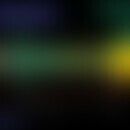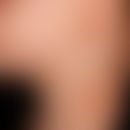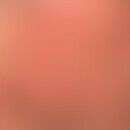DefinitionThis section has been translated automatically.
Complication(s)(associated diseasesThis section has been translated automatically.
You might also be interested in
General therapyThis section has been translated automatically.
External therapyThis section has been translated automatically.
No polypragmasia, as sensitisation often occurs. If possible, epicutaneous testing (ointments, ointment supplements, disinfectants, local anaesthetics, antibiotics) before starting therapy again, see Table 1. Cleaning: Careful cleaning of the periulcerous area. Removal of ointment residues with oils, e.g. Oleum olivarum or detachment with physiological saline solution or Ringer's solution. Cleansing baths for very dry skin with addition of a bath oil (e.g. Balneum Hermal oil bath, Linola fat oil bath). It is important to avoid irritation of the ulcer environment by the ulcer secretion, e.g. by covering the ulcer environment with zinc paste (Pasta zinci R295 ), cover paste R001 or R002, pure Vaseline or an indifferent fat cream. Also a soft paste such as Pasta zinci mollis/Ungt. molle can be helpful to cover and care for the chronically scaling eczema in addition to ointments and fatty ointments.
Pyodermic: Baths with addition of a disinfectant such as potassium permanganate (light pink) or polyvidon iodine solution (e.g. R203, Betaisodona Lsg.).
Acute, non-wetting: Hydrophilic creams (type O/W) like Unguentum emulsificans aquosum or base cream (DAC), lotions (e.g. Lotio alba) or emulsions (Ungt. Cordes) have anti-inflammatory and cooling effects.
Weeping: Moist and greasy damp compresses for 2-3 days (otherwise excessive drying out). Short-term glucocorticoid-containing external preparations in an indifferent base e.g. 0.1% triamcinolone ointment or 0.25% prednicarbate (e.g. Dermatop ointment/fatty ointment) in combination with moist compresses with e.g. 0.9% saline solution or polihexanide (Prontosan, Serasept, Prontoderm). Brushing with aqueous, disinfectant solutions for drying is also possible.
Dry: Exteriors with a low fat content, Vaseline alb. or fatty ointments. In the initial phase of the acute eczema, short-term external preparations with added glucocorticoids, e.g. 0.1% triamcinolone ointment (e.g. Triamgalen or a 0.1% triamcinolone acetonide ointment) or 0.5-1.0% hydrocortisone cream (e.g. Hydro-Wolff, R120 ) or 0.25% prednicarbate (e.g. Dermatop ointment/fatty ointment). It has proved to be effective to intensify the lipid replenishment by a short-term occlusive treatment by applying a plastic foil (e.g. household foil) for 8-12 hours. Powders, shaking mixtures and/or moist compresses are not indicated here due to their drying effect.
The combination of a fatty ointment with moist compresses can also be used for a short period of time in crusty and/or squamous chronic forms of eczema.
When using special formulations with heparin/heparinoid additives in pastes that are suitable for promoting blood circulation around the ulcer margins, caution is always advised against possible sensitisation.
TablesThis section has been translated automatically.
Sensitization in case of leg ulcer and/or lower leg eczema
Active ingredient groups |
Active ingredients |
Ointment bases |
e.g. wool wax alcohols, Peru balsam |
Disinfectants and preservatives |
e.g. quinoline, isothiazoles, parabens, sorbic acid |
Antibiotics |
e.g. neomycin, gentamicin, bacitracin |
Local anaesthetics |
e.g. benzocaine, pantocaine |
Glucocorticoids |
|
LiteratureThis section has been translated automatically.
- Daroczy J (2002) Antiseptic efficacy of local disinfecting povidone-iodine (Betadine) therapy in chronic wounds of lymphedematous patients. Dermatology 204(Suppl1): 75-78
- Lindemayr H et al (1985) Lower leg eczema and contact allergy. dermatologist 36: 227-231
- Tronnier H (1996) Phased therapy of lower leg eczema. Vasomed 2: 82-92
Incoming links (8)
Base cream dac; Covering paste (ulcers); Hydrocortisone cream 0.5-2.0% (w/o); Lower leg eczema; Masking paste (contains ulcer-itchthyol); Povidone-iodine solution 10%.; Triamcinolone acetonide ointment 0.1%; Zinc paste (dab);Outgoing links (18)
Allergy (overview); Antibiotics; Contact dermatitis toxic; Covering paste (ulcers); Disinfectants; Epicutaneous test; Glucorticosteroids topical; Heparinoids, topical; Hydrocortisone cream 0.5-2.0% (w/o); Leg ulcer; ... Show allDisclaimer
Please ask your physician for a reliable diagnosis. This website is only meant as a reference.




